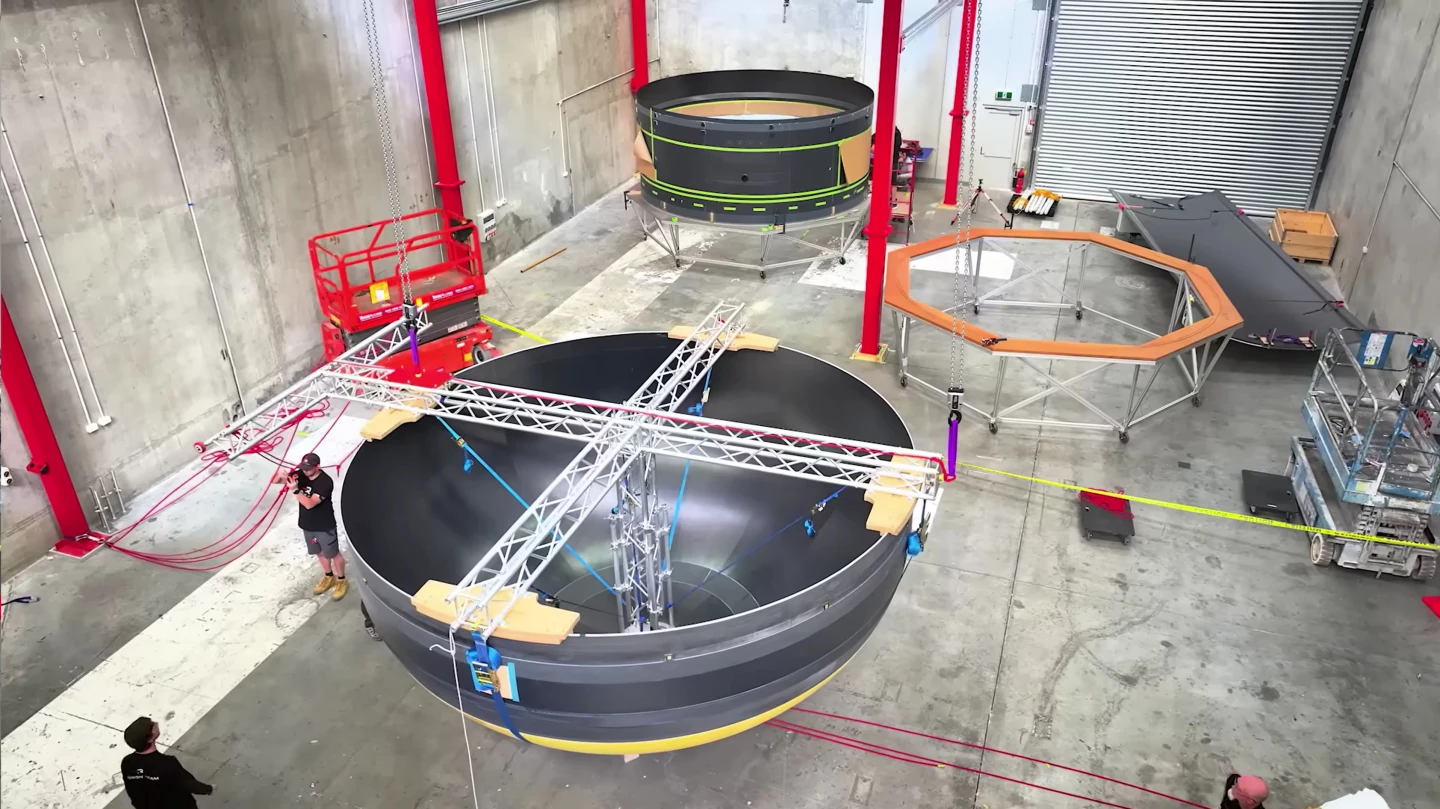Rocket Lab is making innovative strides in space travel with the Neutron medium payload rocket – namely, it's the largest composite rocket ever made. Initially, hundreds of layers and thousands of square feet of carbon fiber were laid onto a mold by hand, taking a large team several weeks to complete.
Now, with Rocket Lab's new Automated Fiber Placement (AFP) machine, it can be done in a single day.
You can think of it as being similar to a 39 ft tall (12 m), 75-ton, autonomous 3D printer that spits out carbon-fiber layers at 328 ft (100 m) per minute. Instead of "printing" pieces, it lays carbon fiber sheets in various directions, layer by layer, to build strength and rigidity into each structure. The AFP is capable of traveling laterally up to 98 feet (30 meters) making it fully capable of laying the largest pieces – the 91 ft (28 m) long interstage and fairing of the Neutron rocket.

The AFP is also responsible for layering the 22.9 ft (7 m) diameter first stage and the 16.4 ft (5 m) diameter second stage tank.
While working on a piece, a fully automated, built-in inspection system scans for defects or imperfections in the carbon composite structure and will pause to alert the operator before proceeding to the next layer.
SpaceX's Starship is primarily made of stainless steel (300-series "HFS," like the "bullet proof" stuff the Cybertruck is made of) while Boeing's Starliner uses mostly aluminum alloys. Initially, SpaceX considered using CF composites for the Starship but opted for stainless steel for its cost-effectiveness, temperature resistance, and durability.

Rocket Lab expects the usage of the AFP to save over 150,000 man-hours of construction of the world's largest composite reusable rockets by making them more affordable as well as faster and easier to produce.
According to Rocket Lab's website, the company aims to launch the first Neutron rocket sometime in 2025.
Source: Rocket Lab








